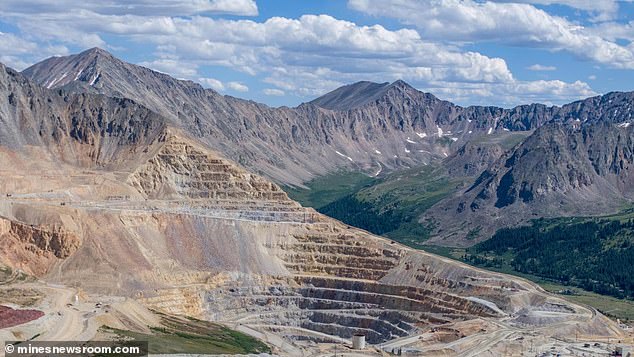The US has been throwing away a fortune in precious minerals that could change the balance of the entire electric car industry forever.
A new study by researchers from the Colorado School of Mines has uncovered the hidden treasure trove American mining operations have literally thrown away, including vast supplies of cobalt, lithium, and gallium.
These minerals and many others are critical for making things like electric car batteries, solar panels, electronics, and military equipment.
Despite being successfully dug out of the ground, however, the study found these minerals and many other rare earth elements are regularly discarded because US mines have focused on other materials like gold, copper, and zinc.
If the minerals were used, it could shift the fortunes of the US economy and end the dependence on foreign nations which currently supply the country with these minerals.
In fact, researchers estimated that US mines waste enough lithium every year to power 10 million electric car batteries.
Meanwhile, American mines throw away enough manganese, another car battery mineral, to help build 99 million EVs.
The study found that if the US started using this hidden goldmine, the country could shift from being an importer of minerals who spends billions on these resources to an exporter that makes billions and potentially creates thousands of new jobs.

Colorado’s Climax Mine (pictured) is one of dozens of US mines reportedly wasting valuable resources that could build electric car batteries

Researchers estimated that the wasted minerals in US mines could build millions of new EVs (Stock Image)
The mineral waste researchers examined, known as ‘tailings,’ is the leftover rock and material after miners extract its main product, like gold or copper.
These tailings are usually piled up and stored, which can harm the environment if not managed properly.
The study, published in the journal Science, found that these waste piles contain valuable elements, such as neodymium and yttrium, that could be recovered and used to make EVs, wind turbines, radars, laser targeting systems, and missiles.
Lead study author Elizabeth Holley said in a statement: ‘This is a brand-new view of ‘low hanging fruit’ – we show where each critical mineral exists and the sites at which even one percent recovery of a particular critical mineral could make a huge difference, in many cases dramatically reducing or even eliminating the need to import that mineral.’
To Holley’s point, the researchers revealed that recovering just 10 percent of the cobalt wasted in these mines could meet the entire US demand for electric car batteries.
Moreover, recovering less than one percent of germanium from mining waste could eliminate the need for imports of the mineral into the US altogether.
To put this in perspective, approximately 15 million cars are sold in the US each year, so these wasted minerals could supply batteries for a huge portion of the electric vehicle market, both in America and around the world.
The discoveries applied to 54 active mines across the US, including Red Dog mine in Alaska, which has large quantities of germanium, and Stillwater and East Boulder mines in Montana, which could provide massive supplies of nickel for batteries.

If US mines utilized the lithium discarded each year, it could build EV batteries for 10 million vehicles (Stock Image)

The mineral waste, called ‘tailings,’ is what’s in leftover rocks after miners extract precious metals such as gold or copper
Read More
Mysterious message ‘from Moses’ found in ancient Egyptian mine could prove the Bible true

The researchers created a database of how much material was produced each year at US metal mines.
They combined this with information from the US Geological Survey (USGS) and other sources which track the amounts of critical minerals present in the mined rocks.
Using a mathematical model, they estimated how much of these valuable minerals were being mined but thrown away as waste annually.
While there are massive amounts of resources sitting near American mines waiting to be used, the team did note that it would take serious effort to extract the minerals from the rocks they’re stuck in.
Holley added that creating a process which pulls all of the minerals from the leftover rocks is going to be a difficult and expensive operation.
‘It’s like getting salt out of bread dough – we need to do a lot more research, development, and policy to make the recovery of these critical minerals economically feasible,’ Holley said.
However, once that process has been created, domestic mineral recovery could create new jobs in mining, processing, and related industries like electric vehicle production.
It could also lower costs for US manufacturers by providing cheaper, local access to critical minerals.
The US currently imports most of its lithium, cobalt, and other minerals from countries like China, Australia, and the Democratic Republic of the Congo.
